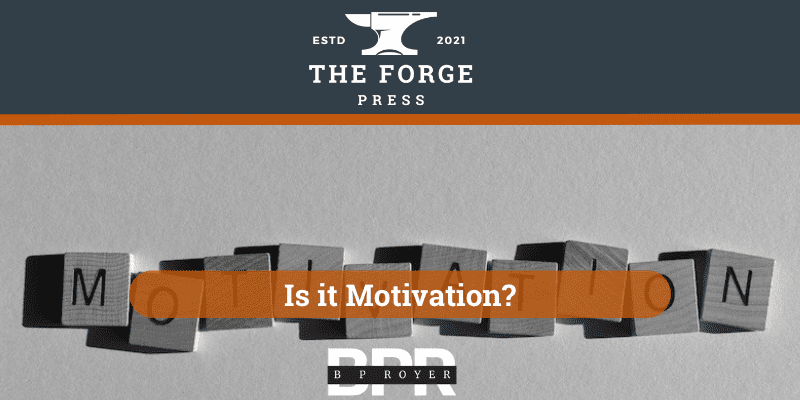Spending time and resources to keep your team motivated may seem like a good investment, but you will quickly find that it’s a black hole of effort. Understanding motivation is not new; we’ve known how it works for over a century.
Spoiler alert: if you are trying to get your team motivated to do something, you’re working backward.
First, the science.
Over a century ago, psychologist and philosopher explained this phenomenon:
“Action seems to follow feeling, but actions and feeling go together; and by regulating the action, which is under the more direct control of the will, we can indirectly regulate the feeling, which is not.”
Why are our feelings more difficult to control? Our brain keeps us safe. The bottom line is that when you are having trouble getting motivated (usually we call this procrastination), it’s because the limbic system (the unconscious and emotional part) and the prefrontal cortex (the conscious and rational part) are at war.
Saying you won’t do something is uncomfortable. Saying you will do it tomorrow feels better.
Let’s apply this to the workplace.
A good leader will start with questions when a team member is underperforming. The most common answer is, “I’m just not motivated.” We ask how they might get motivated and put tremendous effort and resources into motivating them.
This thinking is flawed and not aligned with our biology.
It’s worth noting that when we are underperforming and say we are just not motivated, we are not being dishonest. Motivating someone else’s problem and then making it the problem is an excellent biological strategy.
Procrastination is nothing more than waiting for motivation. If someone said they would be happy to do their job but have to wait for motivation, you wouldn’t likely accept that response. But, in practice, many do this as a regular part of coaching – taking responsibility for not creating a culture that is motivating enough and excusing the poor performance as your fault.
Let’s not do that anymore.
Action before motivation
Research shows that the outcome is almost always a failure when we apply effort to feel motivated. However, when we apply effort to create action – to do what we should but aren’t feeling like doing – even when we amplify the slightest success.
Our effort belongs in this moment – celebrating the proper outcomes from the right effort.
When someone you are coaching says, they aren’t motivated, acknowledge that feeling and help them understand that the absence of motivation does not excuse them from the responsibility of action.
The sooner you can help them understand the correct order – action, motivation, momentum – the sooner they will find success.
Motivation to momentum
This is the best part. Once action creates motivation, you start building momentum. Momentum is where the principle of leverage in the four disciplines of execution ($15 amazon.com) comes to life as 20% of our effort produces 80% of our results.
In Action
Have you ever led or attended a meeting first thing in the morning where the goal was to get everyone “pumped up” for the day?
Sometimes the warm feelings seep in, and you walk away feeling like you will have a great day. However, you will likely find it was hit and miss in reflection. Sometimes the great song or funny stories didn’t get you past the huge list of things to do.
Let’s make a best guess and say that 10% of the time, you walk away feeling great and have an exceptionally productive day.
What if there was a way to get that over 80%? Worth a try?
Start with a spark
What we want is a campfire (go with me here). A long, burning fire that lasts throughout the day – or even longer. Those high-energy, misguided meetings are like pouring gas on wood. Without a spark, you just have smelly, wet wood.
The morning “spark” should define and enable the first action. It’s not about feeling excited about it, it’s about being committed to it.
For example, perhaps you have a complex project to do as a group. Everyone talks about their first step – what they will do for the next hour. It doesn’t have to be exciting, only defined. It should be attainable, bite-sized if you will, so motivation develops organically. The team can post status updates as they complete those first steps of the day – high-fiving each other and calling out the next steps. Even calling out unforeseen obstacles is something to build on since learning something new that helps us find a better path is a win.
This may seem cheesy talking it out like this, but in practice, it creates community and belonging. “We are in this together” is the sentiment we are going for when we work like this.
Keep the campfire going.
Now that your team is working together to get those initial steps moving, all of that motivation creates momentum. This is identifiable in a few different ways, but most noticeably, when someone is faced with a challenge, the team jumps in to move past it.
The great thing about momentum is it carries across days, weeks, or even months. Team members show up to the Daily Spark with stories and high fives that feed the good vibes.
Be warned
If you stop talking about the next step – stop providing the spark, motivation will fade, and momentum will go away. It is this defining of the next step, the clearly defined effort, that gets us back around the campfire.
It’s easy to turn those first connections into moments where we celebrate the accomplishments of the day before and review the task list for the current day. Yesterday’s wins are not the spark for today. In this analogy, they are perhaps additional tinder for today’s fire. They won’t get you through the day.
Build on the wins of yesterday (tinder), enable and celebrate those first actions of the day (spark), and create the momentum that top teams enjoy (campfire).
Like the idea? Don’t put it off until you feel like doing it.
Start today!



